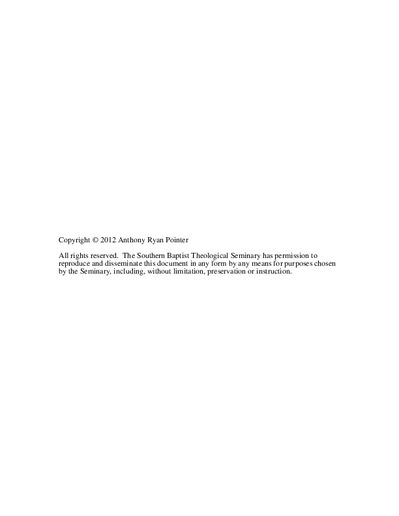| dc.description.abstract | The purpose of the project was to determine if fictional literature is a viable apparatus for teaching biblical truths to high school students. Three goals were used to determine the effectiveness of the project. The first goal was to determine if the memorable nature of fictional literature could increase the ability of students' to comprehend and retain biblical truths. The second goal was to verify if the applicable temperament of fiction could increase the students' ability to apply biblical truths. The third goal of the project was to determine if creative examples of fictional literature could increase the students' ability to utilize their God-given imaginations.
A study of the parabolic and prophetic literature of the Bible demonstrated that the three goals of the project were achievable. The examination of the use of parables in 2 Samuel 12:1-15, Mark 4:10-12 and 4:30-34 conducted in the project confirmed that fiction can communicate biblical truths in a memorable and applicable manner. Likewise, an assessment of the symbolic acts, oracles, and visions of the Old Testament prophets, like those found in Jeremiah 13:1-11, also proved that the project's goals had theological rigor.
The examination of the current scholarship in the fields of education and developmental psychology conducted in the study yielded an abundance of information pertaining to the usage of various educational methodologies. First, an exploration of the function and purpose of art, music, and literature illustrated that propositional truth could be communicated through abstract mediums. Next, the investigation of the connection between the adolescent developmental stage and emotional learning theory performed in the project provided solid educational credence for the study's three main goals. Also, an assessment of the pedagogical implications of fictional mediums such as storytelling, analogies, and illustrations was conducted in order to provide a practical framework for the principles argued in the project. Finally, a historical survey of the teachings of Moravian bishop John Comenius, C. H. Spurgeon, and Jesus of Nazareth provided a historical outworking of the proposed concepts.
In order to evaluate the project's ability to accomplish the aforementioned proposals, a pre-project and post-project exam was administered. At the start of the project, a pre-project exam was administered to two separate groups of students to test their conceptualization of a specific biblical truth. Then, once a week, one group of students departed from their normal curriculum in order to study a specific biblical truth using fictional literature; the other group was taught using lecture. At the conclusion of the project, both groups of students were given an identical post-project exam to determine if there was any improvement in their comprehension and application of the aforementioned biblical truth. Overall, the group that received a weekly lesson utilizing fictional literature as its primary teaching methodology demonstrated greater improvement from their pre-project exam to their post project exam. | en_US |

